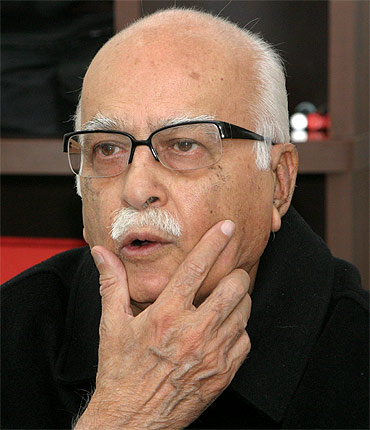In a column in The Indian Express published on September 9, 2014, Neelkanth Mishra, India Equity Strategist for Credit Suisse pointed out that “a large number of your power plants are running with less than four days worth of coal inventory…Even a flash strike would cripple India, let alone a prolonged confrontation.”
This when India has the third largest coal reserves in the world. Despite the enormous reserves we are unable to produce enough coal to meet the demand. During this financial year the demand for coal is expected to be at expected to be at 787 million tonnes. The supply is expected to be at 590 million tonnes.
The government of India had expected this rise in demand and in 1993 decided to give out coal blocks to public sector as well as private sector companies. The idea was that these companies will also produce coal and the country would have enough coal to meet the demand. These coal blocks had geological reserves amounting to 44.8 billion tonnes.
A bulk of these mines were given out starting in 2004, after the Congress led United Progressive Alliance came to power. The Screening Committee route which was used to give away these blocks was deemed to be fairly arbitrary by the Supreme Court in a recent judgement: “The entire exercise of allocation through Screening Committee route…appears to suffer from the vice of arbitrariness and not following any objective criteria in determining as to who is to be selected or who is not to be selected. There is no evaluation of merit and no inter se comparison of the applicants. No chart of evaluation was prepared. The determination of the Screening Committee is apparently subjective as the minutes of the Screening Committee meetings do not show that selection was made after proper assessment. The project preparedness, track record etc., of the applicant company were not objectively kept in view.”
Given this, the Supreme Court deemed these allotments to be “illegal”.
On September 8, 2014, the government told the Supreme Court, that it had no objection if all the 218 coal blocks that were allocated through this route to the public sector as well as private sector companies are cancelled. Around 31 coal blocks that had been allocated currently produce coal.
At close to 53 million tonnes in 2014-2015, these blocks will produce around 9% of the country’s total coal production of around 590 million tonnes. If the licenses given to these blocks are cancelled, there will be a huge coal shortage. In a previous piece I had estimated that importing this coal from Indonesia will cost around Rs 17,300 crore, pushing up the power tariffs further.
One suggestion that has been put forward is that the government owned Coal India Ltd should take over the functioning these coal mines and ensure that the production does not stop. This seems to be a sensible thing to do, once the intricacies of who gets to keep the profits made from the coal being mined out of these mines, is decided.
Further, these coal blocks are likely to be auctioned in the days to come. As the PTI reports “According to sources, the Ministry of Power and Coal is planning to auction the blocks, allocation of which may be scrapped by the apex court, by the end of the fiscal. “The entire process of coal block auction will take at least 6 months,” the source said.””
While theoretically this sounds the best way forward, auctions may not be so easy to carry out. The Coal Block Auction draft guidelines were released on April 4, 2011. And nothing has happened since then. One reason obviously is the lack of work culture that prevailed during the previous Congress led UPA government. But there is more to it than just that.
As Neelkanth Mishra of Credit Suisse wrote in a research note released in March 2014 “The government has been planning to conduct coal block auctions for close to three years now (see link), but despite repeated pronouncements of it being a few weeks/months away, there has been little progress. In our view, the challenge is inadequate prospecting—the ministry may be apprehensive of the winning private bidder in an auction managing to increase reserves estimates within a short time frame. Such a development would create negative press and possibly trigger anti-corruption investigations. Thus, blocks are unlikely to be auctioned till reserves have been updated.”
This needs to be explained in a little more detail. The Geological Survey of India first carries out what is known as promotional drilling. This gives sort of a quick and dirty estimate of the total amount of coal reserves in a block. It is followed by detailed drilling carried out majorly by the Central Mine Planning Design Institute(CMPDI), one of the subsidiaries of Coal India. The Mineral Exploration Corporation also chips in. This round of drilling gives an exact estimate of the quantity of coal in the blocks along with other characteristics like quality, depth, gradient of coal seams, the ash content, volatile matter, water content etc. These parameters are used to prepare the proect report.
CMPDI currently is understaffed to carry out this exercise quickly enough. Experts believe that in order to carry out this exercise completely, it will take many years. Also, without a proper estimate of the amount of coal that can be mined out of a block, it is risky for the government to auction the block, given that it could later lead to litigation. Hence, it is important this exercise be completed properly. The mining of coal from these blocks can take a few more years after the completion of this exercise. Estimates suggest that it takes 10-12 years to get a coal mine going.
In fact, this mess could have been avoided if the coal blocks would have been allotted through competitive bidding, from the very beginning. In August 2004, PC Parakh had proposed to Manmohan Singh (who had taken over as coal minister after Shibu Soren resigned) that the allocation of coal blocks should be done through competitive bidding.
In fact, even before Manmohan Singh had taken over as coal minister from Soren, Parekh had called for open house discussion of the stakeholders in June 2004. This included the business lobbies FICCI, CII and Assocham. Several other ministries whose companies had applied for coal blocks were invited. So were private companies.
Parakh writes that most of the invitees were not in favour of competitive bidding for coal blocks. As he writes in Crusader or Conspirator—Coalgate and Other Truths “not many participants were enthus
iastic about open bidding. Their main argument was that the cost of coal to be mined would go up if coal blocks were auctioned.”
Due to this and other reasons, the coal sector has landed up in a huge mess. And given the lack of supply of coal, power plants are not working to their full capacity. “Plant load factors for thermal power plants have been plummeting, and would be below 60% (i.e. going back to levels seen in the mid-1990s) if one includes capacity completed but not commissioned,” writes Mishra.
It is unlikely that the coal production and hence, power production are going to go up dramatically any time soon. The least that the government can do is to prevent further damage and act quickly to get the sector up and running, over the next five years that it is in power.
The article originally appeared on www.Firstbiz.com on September 10, 2014.
(Vivek Kaul is the author of the Easy Money trilogy. He tweets @kaul_vivek)




